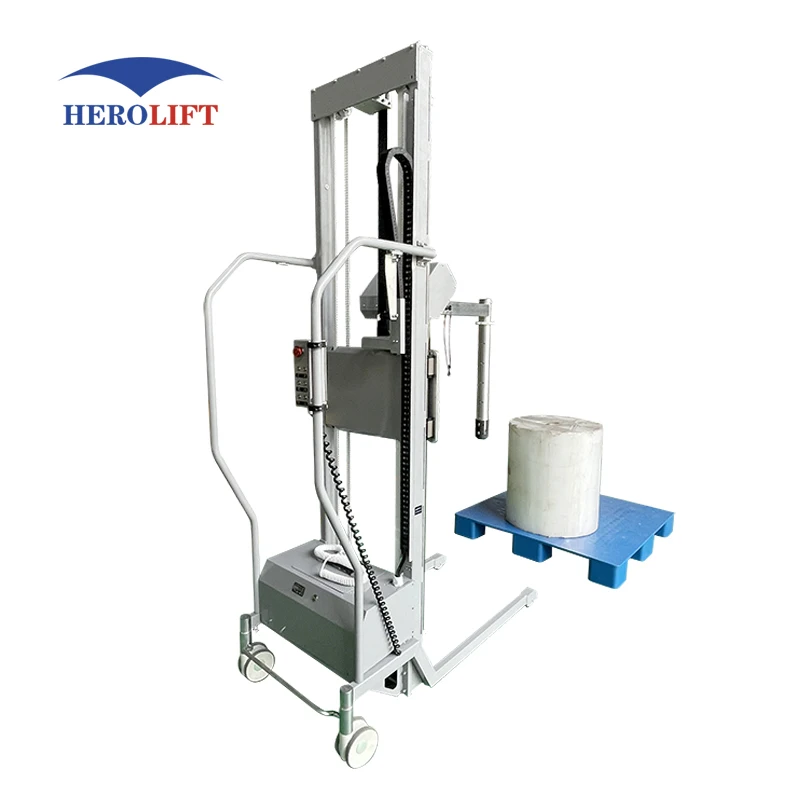There are times that moving things around large industrial places such as factories and warehouses can be a challenge without using some specialized machinery called lifts. In particular, these lifts are vital for improving efficiency and safety when dealing with large and bulky heavy materials. We explain this world of lifts in detail and show how they are revolutionizing our traditional material handling ways.
Importance of Lift Capacity and Height in Material Handling Operations
When it comes to choosing the lift for material handling tasks, there are two important factors that should be considered; those include a Lift capacity and lift height. Lift capacity is the amount of weight a lift can safely carry, and lift height tells you how high items can be raised. This is important because the factors play a major role in deciding about what types of materials to be transported, means for movements and load-bearing capabilities as well how far down from lifts can be reached.
For example, in a large and spread-out warehouse lift trucks are necessary to move units of goods from one area within the facility to another. The trucks have to be hight enough lifted to access high shelves within costly storage systems and with the able capacity of lifting a full load despite how heavy they are - these pallets can weight thousands of kilos! A failure to consider these aspects will lead to hazards, damaged goods and a decreased operational efficiency.
Difference Between Hydraulic, Electric and Manual Lifts in Material Handlings
Hydraulic, electric and manual lifts are among the common types of such devices that have differences in terms of functions that they provide to make them customizable for various tasks. Since hydraulic lifts use hydraulic cylinders driven by fluid pressure to perform the lift, they are best used for heavy duty lifting applications in fields like manufacturing of machinery or parts as well as construction and mining.
Electric Lifts Electric lifts, that perform tasks similarly to hydraulic lifts but leverage an electric motor instead of a hand crank or foot pump are best-suited for indoor applications (like warehouse management and distribution). Electric lift trucks are small and highly maneuverable, making them ideal for use in constricted aisles or tight spaces.
On the other hand, manual lifts and their subcategories of hand-operated or human-powered provide properties that rely on physical mechanisms where operators must push a handle to operate either through pumping or cranking methods lift load up or down respectively. Small Platform Lifts - these lifts make your work easier in small-scale lifting operations, which you can find at several retail establishments and some businesses.
Common Lift Types Used In Industrial Material Handling
Industrial material handling processes require a wide variety of lift technologies, with each having unique attributes and benefits. In this article, we will be highlighting some of the most common types of industrial lifts.
There is various type of forklift available in the market - A strong and versatile piece of machinery used to transport heavy loads/pallets within warehouse & other industrial premises, with different models/capacities that can be catered according to your load size.
Scissor Lifts: Sometimes referred to as Platform Access lift, a scissor lift is an aerial work platform used for extended overhead reach in applications where ladders or scaffolding are not suitable.
Hand trucks - Are used for moving pallets by lifting them up the ground Pallet Jack; a.k.a. Hand truck These are available in manual operation or battery powered that is intended for travelling over short distances with pallets.
Safety Measures To Follow When Using Material Handling Lifts
Lifts improve overall efficiency and productivity within material handling, but the utmost should be given to their safety during operation. Safety Tips That Must Be Considered While Using Lifts In Material Handling Environment
Lifts should only be operated by operators who are properly trained and familiar with the safety features and operating instructions of lift equipment.
Lifts must be kept in the field for proper maintenance and inspected regularly to check whether they are simply fit when of need or not.
Never overload the lift and before ascending or descending, set the load level to distribute all things uniformly.
Make sure that the table is steady and situated on a flat surface: avoid putting it in motion if using over an unstable or sloping ground.
Conclusion Lift technology has come to simplify material handling making it possible for the operation of lifting and moving heavy or large items easier. Lift capacity, lift height and lift type all must be considered when it comes to integrating these powerful tools in material handling operations for increased productivity and efficiency. When trained well and maintained properly, lifts can be a powerful tool in your material handling arsenal offering both efficiency to processing as well as provide ROI for those operations that depend on it.

 EN
EN
 AR
AR
 HR
HR
 DA
DA
 NL
NL
 FR
FR
 DE
DE
 EL
EL
 IT
IT
 JA
JA
 KO
KO
 NO
NO
 PL
PL
 PT
PT
 RO
RO
 RU
RU
 ES
ES
 SV
SV
 TL
TL
 ID
ID
 LV
LV
 LT
LT
 SR
SR
 SL
SL
 UK
UK
 VI
VI
 HU
HU
 TH
TH
 TR
TR
 AF
AF
 MS
MS
 GA
GA
 BE
BE
 MK
MK
 AZ
AZ
 UR
UR
 EO
EO
 LA
LA
 MN
MN
 KK
KK



